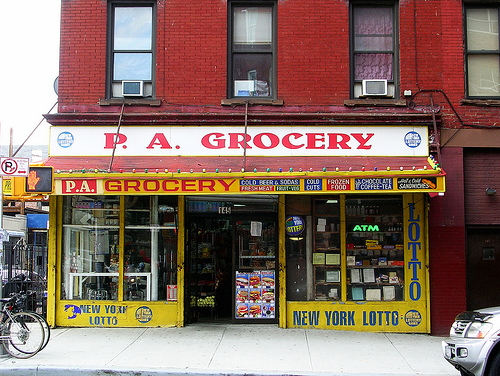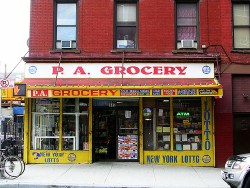Thirty-two-point-six percent of the residents of Philadelphia are obese — a staggering figure, and a higher percentage than any other large city in America.
To address the issue, the city has committed $900,000 to a program that would expand access to healthful food at small, local convenience stores. (We wrote about Philadelphia’s efforts last August.) Selecting some 600 of its 2,500 corner stores to receive funding — and refrigeration systems — the city aims to make fresh fruits and vegetables available in communities that are currently labeled food deserts.
The Washington Post‘s Wonkblog spoke to Philadelphians about the program — and have seen some early signs that people are taking advantage of the produce.
Anecdotal reports from shop owners suggest that sales of fresh produce have indeed increased alongside the surge in supply.
“Almost every day, people grab lettuce or something,” says Catalina Morrell-Hunter, who has owned her corner store in North Philadelphia for 15 years. Apples and oranges go fastest, and cilantro has proved popular in the largely Hispanic neighborhood. “I don’t say I sell like an entire market does. But when people are short a carrot, they can come to the convenience store.”
But anecdotal evidence like this doesn’t prove efficacy. In fact, existing studies suggest that making fresh fruits and vegetables available at local stores often doesn’t have any impact on obesity rates in the surrounding area.
Ohio State University’s Janne Boone-Heineman published a 2011 longitudinal study of food access in Birmingham, Ala., Chicago, Minneapolis and Oakland, Calif. Over 15 years, she traced obesity levels alongside the introduction of healthy food options (grocery stores) and unhealthy venues (fast food restaurants). Her study found no connection between a new grocery store and better health outcomes.
In March, the California institute’s Lee published a paper looking, nationwide, for a connection between proximity to grocery stores, fast food and obesity. RAND Institute’s Roland Sturm published a separate paper this year, one that compared food sold in a neighborhood and children’s diet in California. Neither could find a relationship.
There is some reason for optimism. First, studies like those above haven’t assessed anything with the breadth of the program Philly will eventually have in place. Second, the existing studies have been limited in time frame. Philadelphia aims to change eating habits over the long term.
At least one store owner is committed to helping them do so.
When kids come into Guillermo and Denise Rodriguez’s store, they often buy the bananas at her urging. “It’s not a problem getting them to buy the fruit,” Denise says. “It’s a problem trying to get them to keep buying the fruit, and stay off the junk food. You have people who buy what they want to buy.”
Sometimes they’ll hand out fruit for free, to encourage kids to try it. The goal, says Denise, is to familiarize kids with healthier foods.
That’s a hard way to run a business.
“It’s all good but, you know, when the moment this money stops flowing, things go back to normal,” [University of Washington researcher Adam] Drewnowski says. “There needs to be a longer-term business model.”




